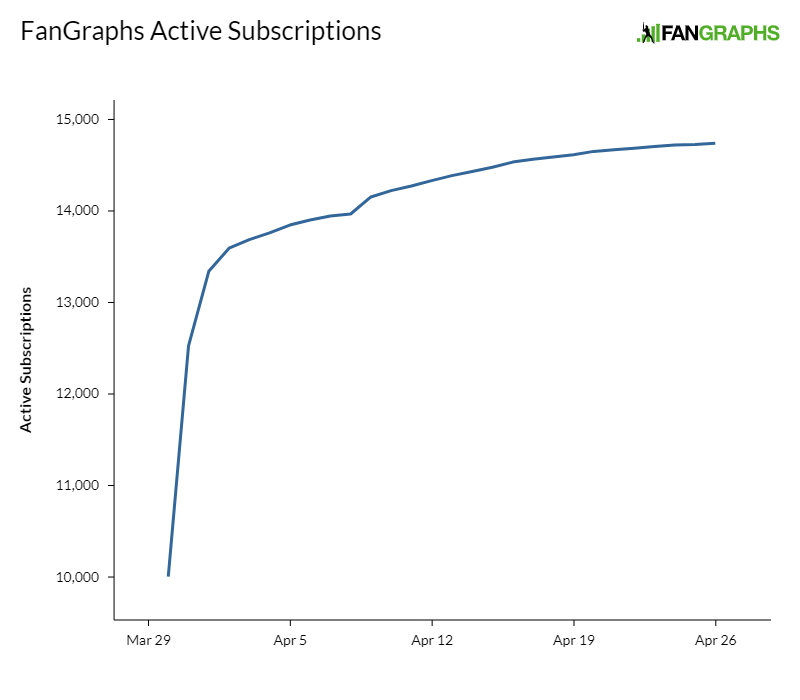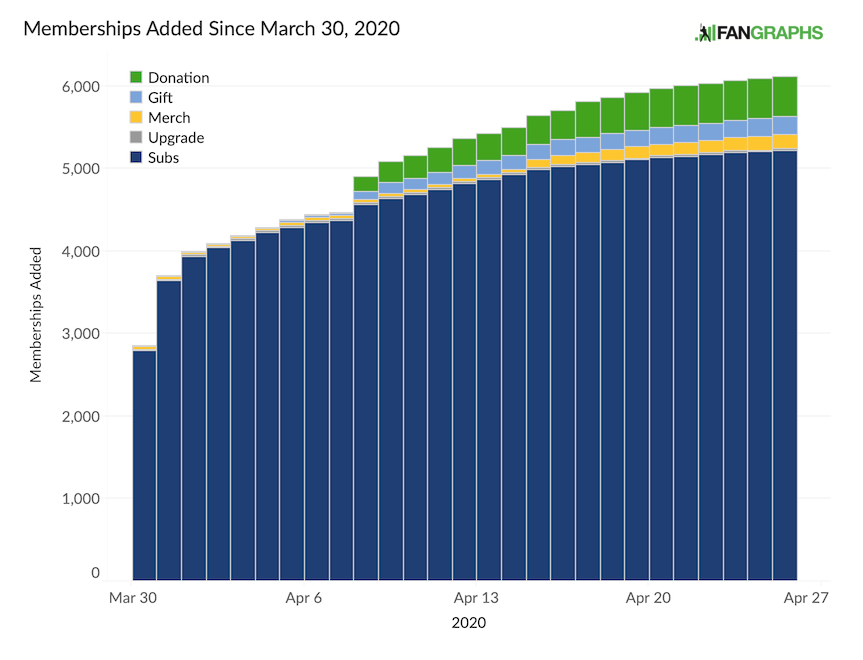A FanGraphs Business Update
Hi again. Thank you so much for the support you’ve shown the site over the past few weeks. In the spirit of continued transparency, I wanted to give everyone a fairly in-depth update on how things are going at FanGraphs. A few weeks ago, we had to change our business model from one primarily driven by ads to a one predominantly driven by site memberships because of the current COVID-19 pandemic, which postponed the start of the MLB season and caused a drastic decrease in both FanGraphs’ traffic and general advertising rates. We set a Membership goal of 40,000 Members, which in a typical year represents less than 4% of our monthly site visitors.
First, let’s look at the some of the good news, which is that Memberships are going in the right direction. Thank you to everyone who has decided to continue their Membership while baseball is on hiatus, upgraded their existing Membership, or signed up for the first time! Prior to March 30, we had 10,004 active Members; that number has increased to 14,739:

If we include merchandise sales, gift memberships, upgrades to Ad-Free, and donations (at the equivalent of the $30 annual Membership), the progress towards that 40,000-Member goal looks even better. Furthermore, our breakdown of Memberships has shifted slightly towards Ad-Free; about 5% of all Members have moved toward Ad-Free. When we include all these additional contributions, it effectively puts us at 16,244 members:

